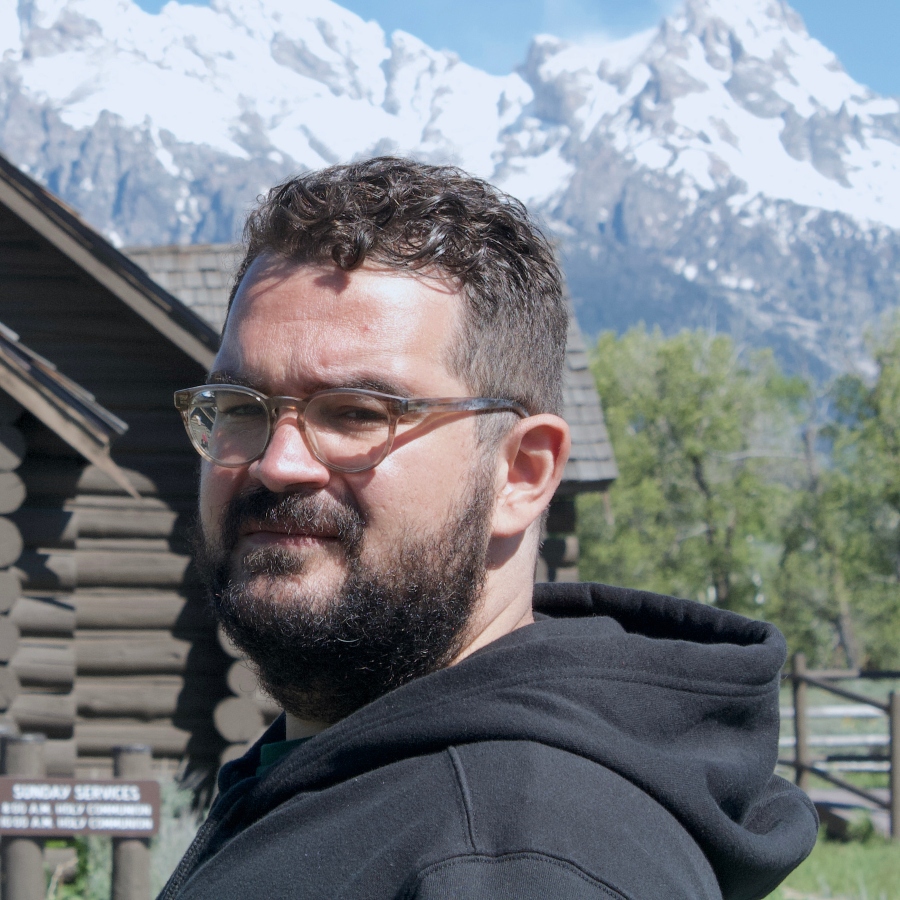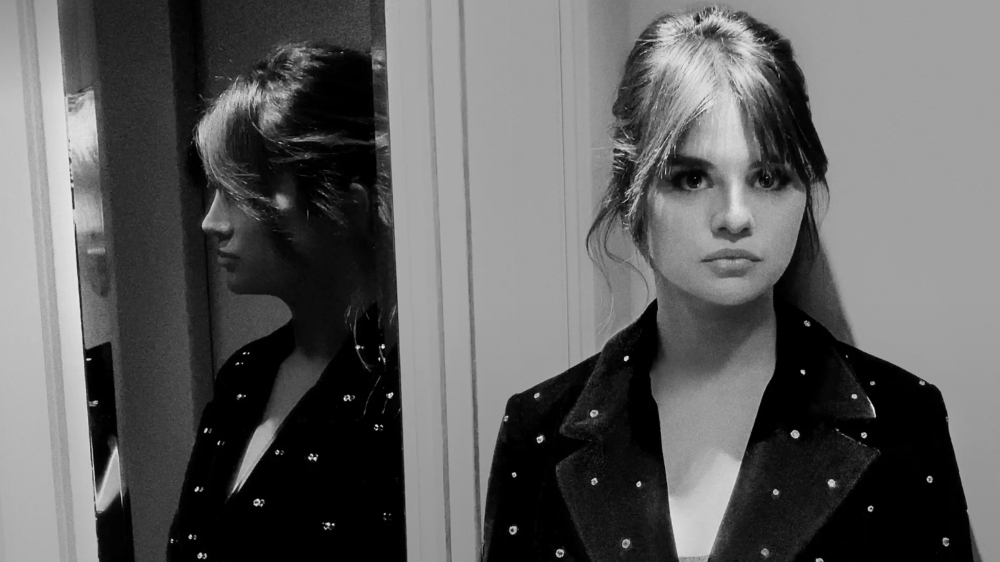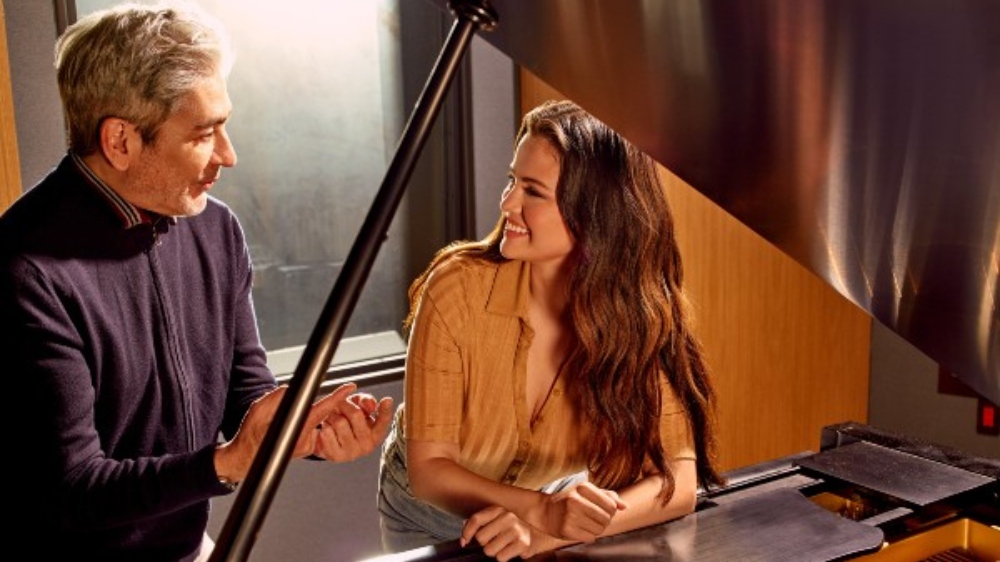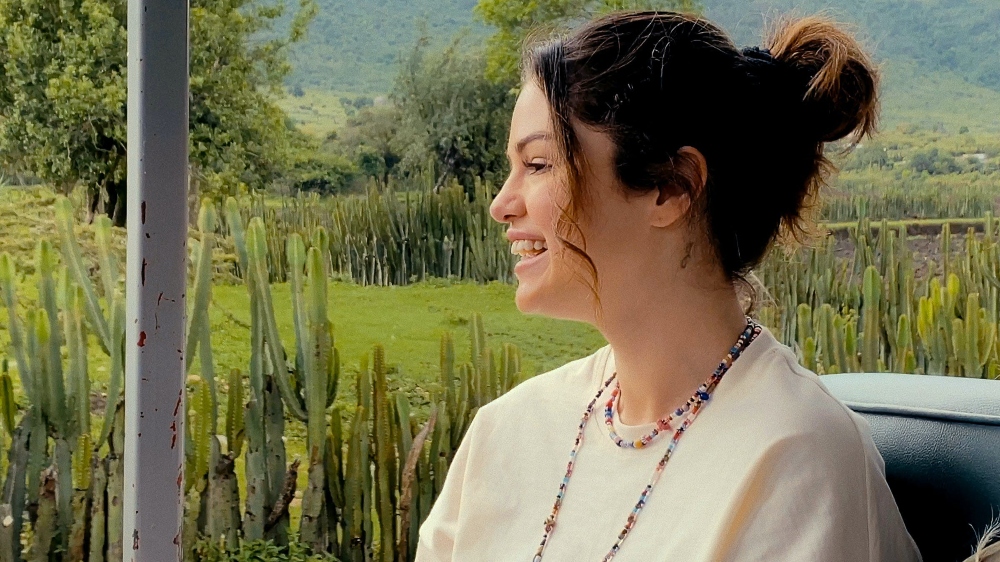Rodrigo Brazão wasn’t the first Editor to come aboard Selena Gomez: My Mind & Me but he played a key role in shaping the film before its world premiere at AFI Fest and subsequent launch on Apple TV+.
What makes this Selena Gomez film so different from most celebrity-focused documentaries is its focus on mental health. A typical pop star documentary had been commissioned during the singer’s Revival tour but she suffered a breakdown and subsequently turned her focus to working on her mental health. Gomez’s newfound struggles and developing ability to understand them would change the film’s focus from the tour to her mental health. As a result, the singer helps destigmatize issues surrounding mental health and offers fans — new and old — a chance to get to know the real Selena Gomez, not just as a musician but as a human first and foremost.
Below the Line recently spoke to Brazão, who explained how the first rough cut of the film ran nearly three hours, and how even as director Alek Keshishian was forced to kill his darlings, so to speak, he worked hard to preserve the emotion inherent in the film, which spans six years. That means there’s more than enough material to release another documentary given how much filming took place during the Revival tour.
Read on for more from Brazão, who also served as an Additional Editor on Netflix’s documentary series Harry & Meghan.

Below the Line: How did you first become attached to editing Selena Gomez: My Mind & Me?
Rodrigo Brazão: I was working in New York City before I moved to Los Angeles. I did remote work with a production company here, Union Editorial. We started to do a lot of jobs together. We did a documentary series for Amazon called Always Jane and through that job, we started the relationship. James Haygood was the Supervising Editor for the show I did. He had worked with Alek before during Madonna: Truth or Dare. I think he cut the sizzle for it or something like that. They had a good relationship, [having known each other] for more than 20 years. Alek needed some help with the edit of the film. He already had achieved a rough cut of almost three hours. He wanted to polish it and bring more emotional work to it. Since I was working with Union, they invited me to be a part of it, so that’s how I got it.
BTL: I noticed that there were several editors listed when I was perusing the film’s production notes.
Brazão: Yeah. Before I got in, they had two editors — Veronica Pinkham and Scott Evans. They were doing this first cut, [and] they had around three hours or something. I came in and we had to dive into the raw footage to find different moments to bring more of the emotional vulnerability of Selena to the film. That was one of the things that Alek wanted to focus [on] to [emphasize] more of the mental health message of the movie, and also, obviously, to shorten it because it was very long. [So] we kept going.
I started in October 2021 and then I think around January, we brought in David Brodie and Inaya Graciana Yusuf to help finish the movie. That’s six of us, right? I think [laughs]? Oh, [and] Danny Tull. He was working since the beginning of the movie. He had collaborated with Alek before [while] doing video clips for Madonna and that kind of stuff. He worked [on] a lot of the music parts of the movie. There’s the tour part of Revival where she has a breakdown on the tour, [and] that was mainly Danny’s work, but we all worked together [on] the movie.
I was going to work on one section when David and Inaya [came] in because before, it was just me and the other editors — we didn’t work together. But when they [came] in, somebody would work on a section and then Alek would switch so we could have different points of view and achieve what he wanted. It was very good because it was a very collaborative process. It was fun.

BTL: I would imagine, with some 200 hours of raw footage, that it’s more than a one-editor job.
Brazão: It is. That’s what happened. We were not going to be able to finish. Before, what happened [was] — if I’m not wrong — I think the editors had to leave because it extended for such a long time to achieve the first cut that they had because it was a lot of footage, and understandably, they already had other commitments. We had to come in to finish it and it happened again. But yeah, it was a lot of footage, and a lot of moments that we have in the movie that are very raw and vulnerable, you just achieve when you sit down and watch the whole thing because they’re specific, tiny moments that you see. It’s a glimpse of something happening there and they just save that thing and try to build around that. It was a very tough job of scavenging for more footage to find those moments, but I think we [found them].
BTL: You had to cut more than an hour of footage to shape the film into a more digestible runtime, so was there any footage that you really wanted to keep but had to lose due to time constraints?
Brazão: I know, yeah. There were a lot of goods things that we don’t necessarily have [in] there. But although it was hard, it was not that difficult because we had a very specific idea from Alek as to what he wanted to achieve with this film. Although we had a lot of other different things — for example, the Revival tour that Selena does [is] the first thing in the movie. It was originally what the movie was going to be about in 2016. We have tons of footage from that. It could be a separate documentary from the tour but that was not the idea with this movie.
Although we had a lot of good scenes, we had to narrow it down to two important moments [from] that tour, which specifically was the breakdown that she has in the dressing room after rehearsing. She was beautiful and great, but that was not enough for her. That was the scene [where] we said, ‘Okay, we have to keep this and what do we need to reach this specific scene?’ In the end, it wasn’t that much to move forward. We did that exercise with all the rest of the scenes throughout the movie to achieve the 95 minutes. In the end, of course, when you have all the scenes you need — I think it was probably 100 minutes or 110 minutes, but we still felt that it could be [shorter] and [a] more direct message to what we wanted to say to the audience.
BTL: Were there any challenges when it came to editing a documentary during the pandemic?
Brazão: We did it mainly in person. I’d say 95 percent of the time was in an office. We had to test for COVID two times a week. It was kind of complicated but it was good because it was the first job after the pandemic that I did that wasn’t remote. It was good to be back in the office and we could exchange more of the cuts with Alek because he would go there, sit with us, and watch. We were cautious, but it was good that we could do it already in person because it was almost the end of 2021, so it was good.
BTL: What was the most surprising thing you learned about Selena while editing the film?
Rodrigo Brazão: I didn’t know much [about] her music career. I mean, I know her — she’s a very famous person — but I was not a fan or something. I was very surprised [by] how she treats her fanbase and people that approach her and how she’s so kind and real with them. That’s all real. It was good to see how she always wants to protect them and talk with them, even if it’s [for] a brief moment, [and how when] she’s speaking with a fan, she’s very kind and thoughtful to them. I felt that was surprising because I didn’t think that she even had time to do that. I think she does it very well with the time that she has, so it was surprising how kind she is [to] her fans.

BTL: In watching this film, it’s amazing what you can see in a documentary that you just don’t get on social media where most everything is curated.
Brazão: Yeah, I know. It’s more on her life — they had the cameras there filming everything. It wasn’t that filtered like I think social media would be. The idea was really to show [her] vulnerability and have people be able to understand her [as] more than just [a] pop star, and show things that affect her life or her mental health so we could connect with her. It was important to show all these vulnerable moments so we could shed a light [on] mental health issues and people could identify themselves and say, “Okay, I have this problem, too, so I can also seek help.” It was important to show it more raw, otherwise, it would be too edited in the sense that it wouldn’t show this message as [well] as it could.
BTL: Were you able to see the film with an audience during its world premiere at AFI Fest?
Brazão: Yeah, I was there. It was very fun. It was the world premiere so it was good. It’s the first time I saw some of the theater so it was like, “wow.” It [was] a good sensation when we achieved that because it was a long process, [so] just to see it done and beautifully colored and stuff was very cool.
BTL: What was the reception like?
Brazão: I think it was very good. Yeah, people were happy and from what I read after, the reviews about the movie were good. I think it [had] a good run. I think they had also some fans invited [to] it, which is always good. They are connected more with her, so it was very good.
BTL: How did you first get an interest in editing?
Brazão: I’m from Brazil and so I first got interested in editing in Rio when I started college at 18. I went to college for communications and I was looking for something to get hands-on [with]. I said, ‘Okay, I want to be a part of this process’ because a lot of things were [just] theory [early on at] school. I looked for something that I could work on, and editing was one of the things that they needed people [for] — to help in the classes. That’s how I started at 18 and I never stopped.
I never worked on something else in the movie business. It has always been editing. I really like it because you have a big role to work on [at] the end of the movie. Everybody’s work is there in the film for you. It’s a big responsibility to pay off for the work that everybody had to [do to] achieve that result. I really like the feeling that you get seeing [something] done and complete, [and also] closing the movie, so it’s very good.

BTL: Do you have a preferred software of choice?
Brazão: I’ve worked a lot with Premiere, but I have been working more now with Avid. I really prefer to work on Avid because the trimmings on Avid are so good that you just go more seamlessly than Premiere. I’d say I like Avid more, but I like Premiere, too. I started on Final Cut 7 way back then.
BTL: So you avoided coming up during the old days when you had to spice it all together by hand?
Brazão: Yeah, I avoided it. When I started, it was 2005, [so] they still had tape but it wouldn’t be, like, a Moviola that you cut film [on], it would just be, like, magnetic tape, and you would record on the tape. It wasn’t nonlinear but it wasn’t like the Moviola — that I didn’t get. But even then, all the linear ones with the magnetic tape that we had in school, I ended up not using that much because Final Cut was already a thing and that’s where we were focusing — we had to capture the little tapes still, but it wasn’t like it was all nonlinear, basically.
BTL: Could you imagine editing a film like My Mind & Me using that older system?
Brazão: Yeah, it’s probably very different because you have to have the decision right in your mind when you’re cutting it. You cannot chop the thing [a] million times. Sometimes, I try to do that — just watch stuff. I take a lot of notes and just sit and rewatch and think and think and think while I’m rewatching, at least [until we’ve] achieved a first cut. After you have a first cut, it’s a lot of back and forth, but just to have that exercise, it’s probably way harder, I’d think.
Selena Gomez: My Mind & Me is now streaming on Apple TV+.





